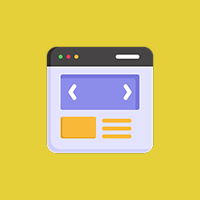UI (User Interface) and UX (User Experience) design are two key components in creating successful digital products, but they serve distinct purposes. While UI focuses on the visual elements and interactive components, UX aims to enhance the overall user experience. In this blog post, we’ll explore the differences between UI and UX, their roles in digital product design, and why both are crucial for a successful user experience.
1. What is UI Design?
User Interface (UI) design is all about how a product looks and feels. It involves designing the visual elements users interact with, such as buttons, icons, typography, and color schemes. UI aims to make the product not only visually appealing but also intuitive and easy to navigate.
Key elements of UI design include:
- Layout: Organizing content and features to make navigation intuitive.
- Typography: Selecting fonts that enhance readability and reflect the brand.
- Color Schemes: Using colors to create an appealing aesthetic and improve user experience.
- Interactive Elements: Designing buttons, sliders, and forms to engage users effectively.
- Responsiveness: Ensuring the product looks and works well on all screen sizes and devices.
2. What is UX Design?
User Experience (UX) design is about the overall experience a user has with a product. It’s focused on improving usability, accessibility, and satisfaction by ensuring that a product is functional, easy to use, and provides a smooth user journey.
Key aspects of UX design include:
- User Research: Understanding users’ needs, behaviors, and pain points through surveys and testing.
- Information Architecture: Structuring content so users can easily find what they need.
- Wireframing & Prototyping: Creating low-fidelity designs to test and refine product flow.
- Usability Testing: Conducting tests to gather feedback and enhance functionality before launch.
- Accessibility: Ensuring the product is usable by everyone, including people with disabilities.
3. Key Differences Between UI and UX
While both UI and UX work toward improving the user experience, they focus on different aspects:
- Focus: UI design is concerned with the look and interactivity of the product, while UX focuses on the overall experience and usability.
- Responsibilities: UI designers deal with visual elements like buttons and fonts, while UX designers focus on user research, wireframing, and ensuring functionality.
- Goal: UI aims to make the interface visually appealing and easy to navigate, whereas UX seeks to create a seamless, enjoyable user experience.
4. Why UI and UX Work Together
Though they have distinct roles, UI and UX are interdependent. A great UI enhances the user experience, but poor UI can ruin even the best UX design. Similarly, a beautiful interface won’t be effective without a seamless user journey. The two must complement each other to create a successful product.
- UI supports UX: A well-designed interface improves navigation, making the product easier to use.
- UX informs UI: User feedback from the UX phase informs design choices in UI, such as button placement and navigation layout.
5. The Importance of Both UI and UX in Product Success
A successful product requires a balanced approach to both UI and UX. Here’s why both are crucial:
- User-Centered Design: Both UI and UX prioritize user needs, ensuring the product is engaging and easy to use.
- Higher Conversion Rates: A well-designed interface and user-friendly experience can increase conversions and customer retention.
- Brand Perception: A polished UI enhances brand image, while a smooth UX ensures users have a positive experience.
- Competitive Edge: Products with excellent UI and UX provide a superior user experience, giving companies a competitive advantage.
6. Conclusion: The Symbiosis of UI and UX Design
UI and UX design are both essential for creating products that are not only visually appealing but also functional and user-centric. Understanding how UI and UX complement each other helps businesses create better products that meet user expectations, leading to long-term success and user loyalty.
Contact Us Today













 Database Development
Database Development












































